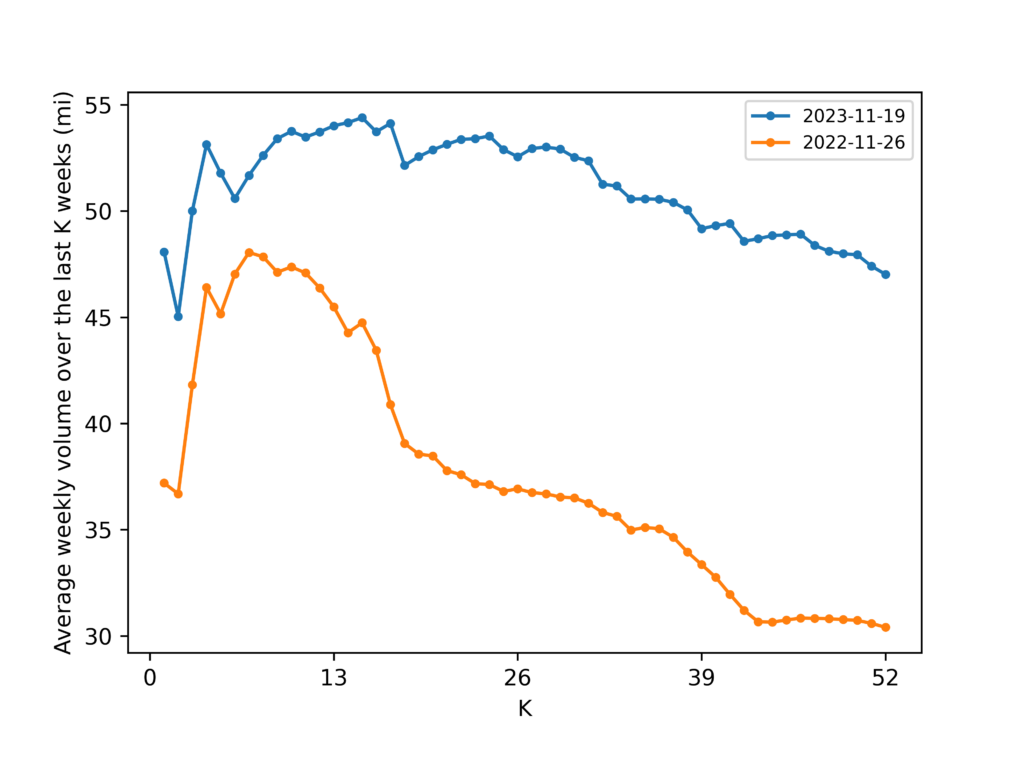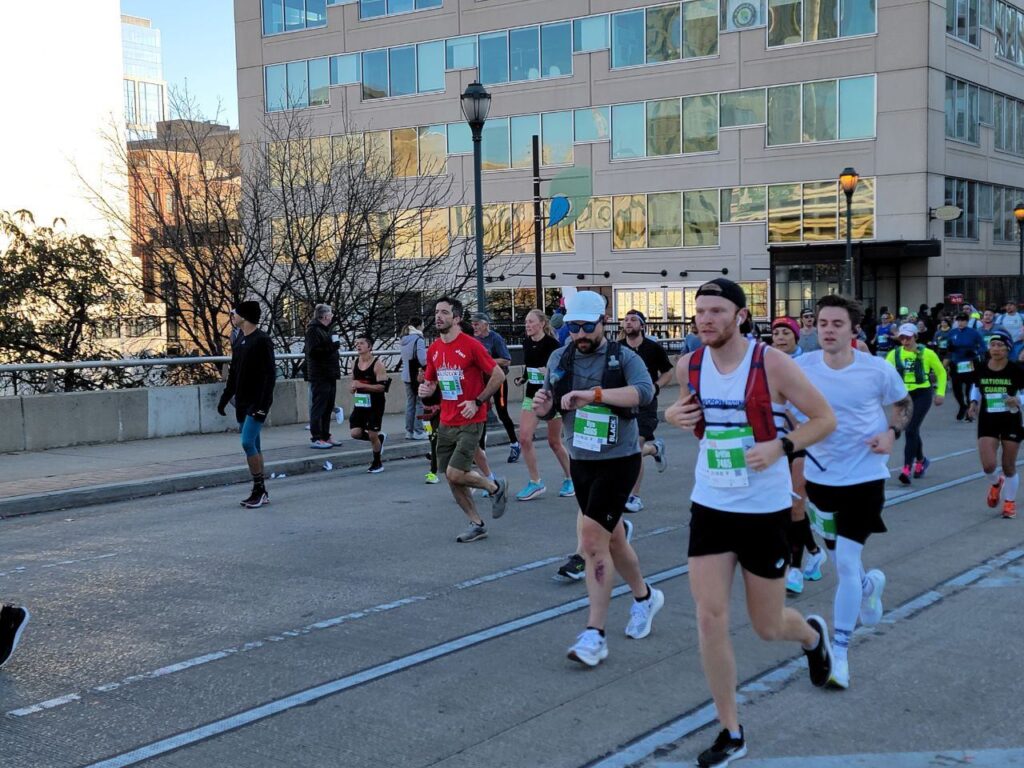Yesterday, I ran Philadelphia Marathon, which was my second attempt at the distance after the last year’s Seattle Marathon, and my A-race for 2023. I got an almost 10-minute PR, improving the time from 3:43:45 to 3:34:07. I’m obviously super happy with the outcome, but I’m even more excited with the fact that this time I didn’t bonk/hit the wall and felt quite strong throughout the whole race (according to Strava, the slowest mile was merely 17 seconds slower than the average pace, in stark contrast with the previous year).
In this post, I’ll try to cover some differences between the preparation for my first and second marathons and reflect how it (might have) affected the result.
Training volume
Immediately after running my first marathon, I started working with Lindsey Herman as my (remote) coach. Together, we increased my running volume quite significantly. Here is a plot that shows an average weekly volume over the last K weeks before both marathons for K = 1, 2, …, 52.

It’s evident from this plot that I ran way more this time, both in the last weeks and throughout the year, compared to the first marathon. Moreover, the training this time was set up in a way that a specialized marathon block was not even particularly necessary and all we needed to do was a couple of particularly long runs (18 and 22 miles; other than those, I have not run more than 16 miles at a time) and a few longer tempo and marathon-effort work-outs. Compared to this, last year I had to ramp up my volume significantly over a sixteen-week block preceding the marathon (you can clearly see it on the above plot), and, as a result, this increased volume was a good deal harder to digest.
It’s well-known that running volume is the best predictor of race results for all distances longer than a mile (provided that one can recover well so that all this running does not become un- or counter-productive), so clearly this year-over-year shift helped me to improve the marathon time.
Quality training sessions
Besides lots of (easy) running, I think two types of harder sessions contributed to the improved race time:
- Hill repeats; Last year, I complained that the hills on the course shredded my legs. This time, the course was a bit less hilly, but still with nearly 800ft of elevation gain, being able to run uphill and downhill efficiently definitely helped.
- Not completely easy long runs. At a basic level, a long run means 1.5 hours or more of easy running. But Lindsey programmed quite a few of moderate long runs (a touch easier than marathon effort) and long runs with some tempo running in the beginning. Both of these types of sessions emulate a marathon much better than a completely easy run, and, at the same time, you can still recover from them quite well if you don’t overdo them.
Fueling and hydration
Last but definitely not least, I think proper fueling and hydration played a significant role. From the very beginning of working together, Lindsey emphasized the importance of proper fueling during every long run: not only it allows you to train your gut to digest calories without distress, but also it boosts the recovery significantly. After such a fueled long run, you can proceed with your day more or less normally rather than feeling tired and destroyed.
In the Summer, to push this further, I worked with Kylee Van Horn, who is a registered dietitian specializing on working with endurance athletes. Among other things, Kylee helped me to dial in the precise amount of carbs, electrolytes and water to consume during a long run or a race. Besides some trial and error, we also looked at the sweat rate and the concentration of electrolytes in sweat (obtained via a sweat test). So, in the end I arrived to the following fueling plan:
- Consume 60g of carbs (GU gels) per hour (it would be ideal to bump it up to 75g per hour, but my stomach is not quite there yet, something to work on)
- Consume water with sodium concentration around 1100mg/L
- Consume at least 1.5L of water throughout the course of a race; whenever I ran out of bottles that I carried, I didn’t hesitate to stop at the aid stations to drink, understanding that it’s much better to lose a bit of time now than get obliterated in the end and lose much more time through that
Overall, I think better fueling and hydration contributed heavily to a no-bonk this year. After miles 21–22, I was waiting when the wall arrives, but it never did, making the race quite an enjoyable experience (well, as enjoyable as a marathon can possibly be).
Race pictures
Let me conclude with a couple of obligatory race pictures. Thanks to my brother-in-law for taking them (and for my family and friends for supporting me during the race)!

